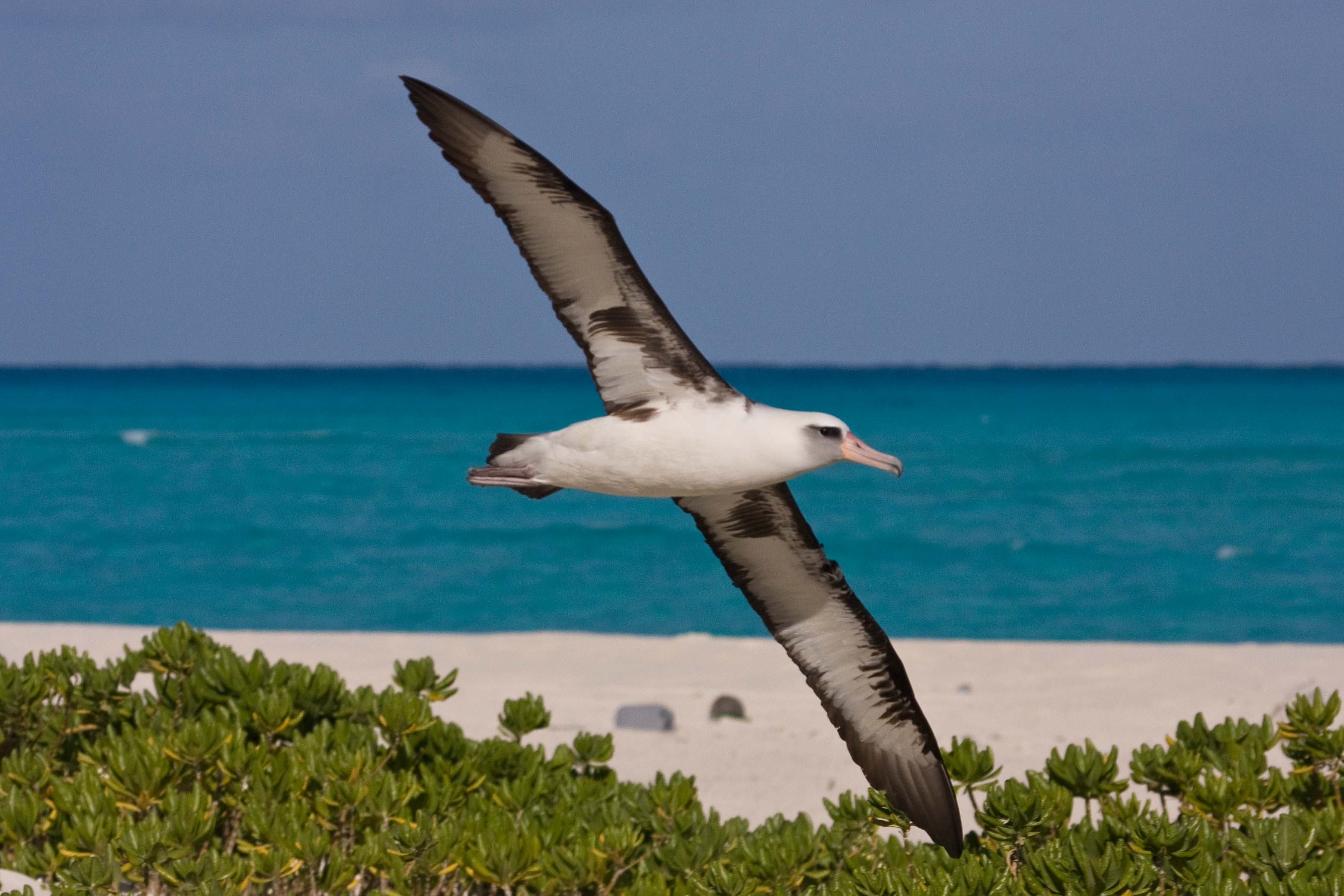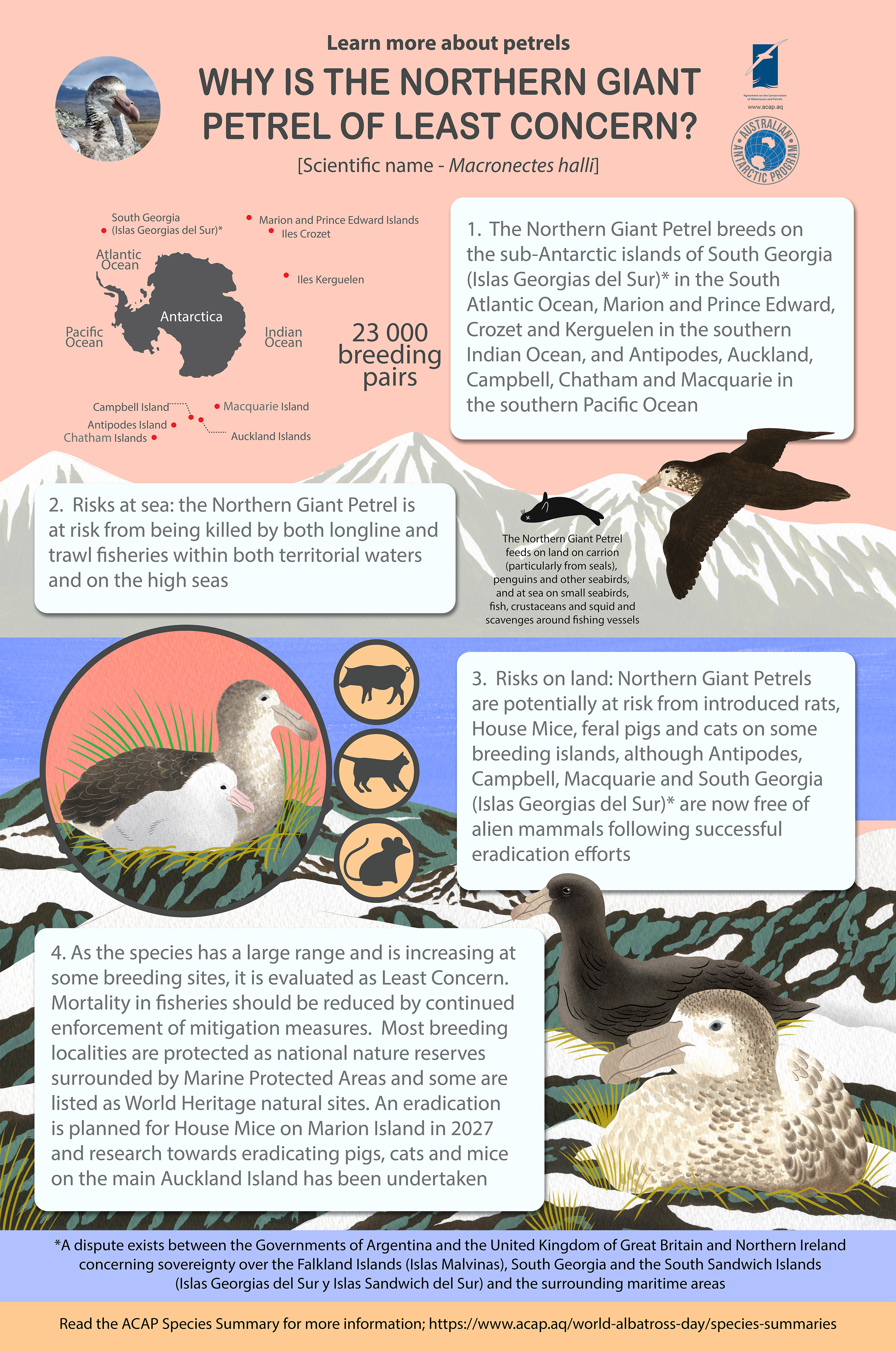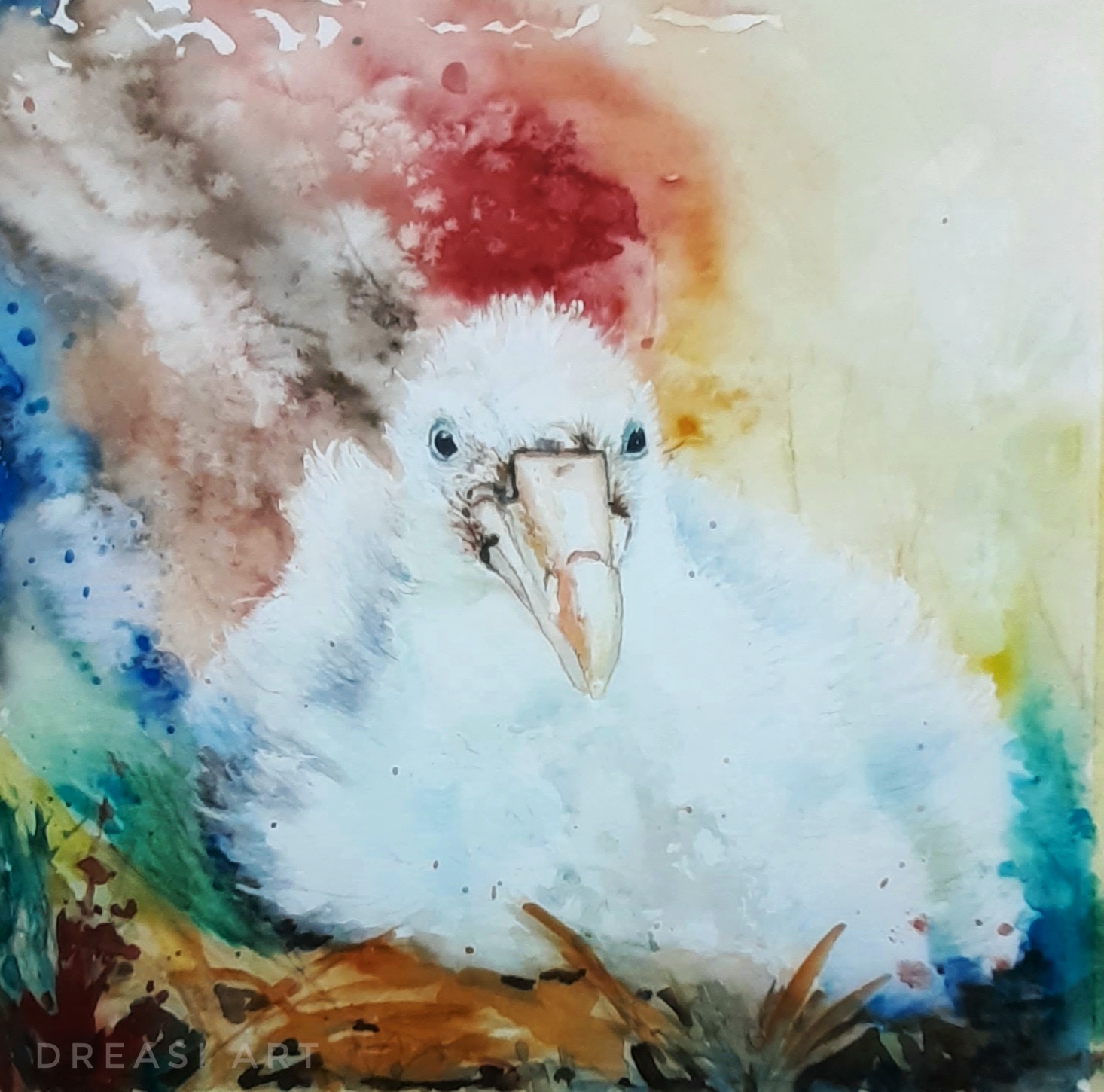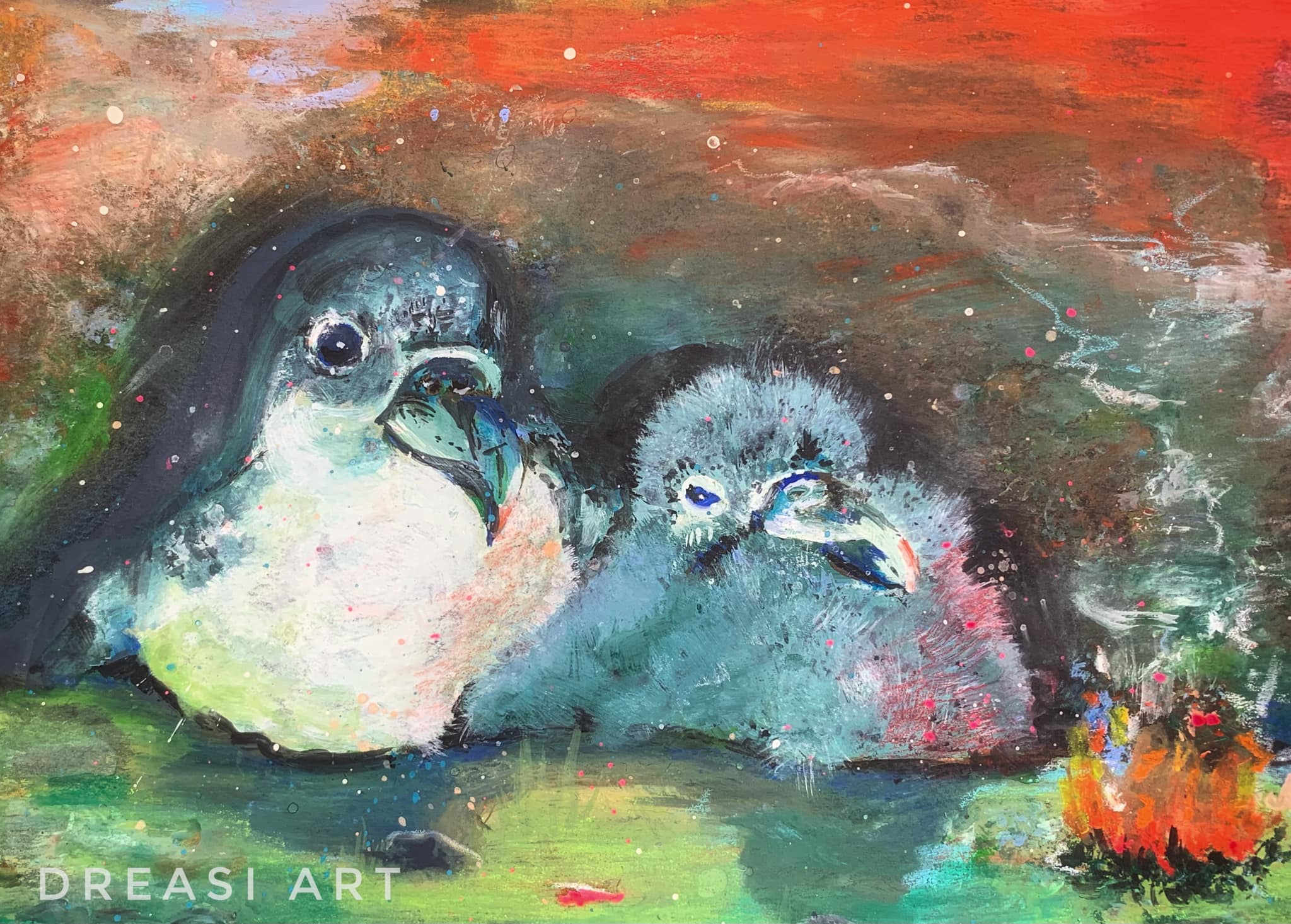
Finding Home, a Hawaiian Petrel’s Journey
Caren Loebel-Fried is an author and artist who resides in Volcano, Hawaii. She has written and illustrated eight award-winning storybooks for young people, including A Perfect Day for an Albatross, published in 2017 by the Cornell Lab Publishing Group, and reviewed in ACAP Latest News. Caren’s has conducted fieldwork on Midway Atoll with the albatross census team, which she has co-led, and studied the Endangered Hawaiian Petrel or `ua`u Pterodroma sandwichensis. Her latest book is Finding Home, a Hawaiian Petrel’s Journey, published by the University of Hawai`i Press in September last year, an outcome of her research into the species.

Caren Loebel-Fried on Midway Atoll with her preparatory sketch of a Laysan Albatross
The publisher’s synopsis follows:
“Eleven-year-old Makani Kealoha Morton adores ‘ua‘u, Hawaiian petrels. She grew up marveling at the seabird’s magical evening sky-dance and murmurs from their underground burrows. Living over the ocean, gliding thousands of miles on the wind to wherever food was abundant, they returned yearly to their burrows in the Hawaiian Islands. Over thousands of years, their guano helped to make Hawaiʻi fertile and habitable for humans. Yet humans brought predators and environmental changes that caused ʻuaʻu numbers to plummet to near extinction.
Makani’s biologist mom and her team devise a plan to save the seabirds. Ten ʻuaʻu chicks are raised within a protected place. The chicks leave for the sea one by one - but Makani’s favorite is very late to fledge. Makani worries: Will this young petrel survive at sea? Will she return to the refuge to raise her own young? Will the plan to save the ‘ua‘u work? By the story’s end, Makani finds her own way to make a difference for the seabirds she loves so dearly.
Based on the true story of ʻuaʻu and the people working to save them, Finding Home, a Hawaiian Petrel’s Journey is filled with Caren Loebel-Fried’s colorful block prints, dynamic drawings, and maps. Following the story, a back section provides scientific facts on the habitat and lifestyle of ‘ua‘u and their connection to Hawaiian culture and history. The book’s middle-grade content includes place-based learning that incorporates natural science, wildlife conservation biology, literature, and art. Appealing to all ages, this hopeful, empowering story brings awareness to the threats humans have brought upon seabirds and inspires us to find ways we can help them survive and thrive.”
Caren learned the art of block printing from her mother. She hand carves rubber or linoleum blocks and then transfers their images with oil-based ink to hand-made paper, she then colours the prints with pencils and black ink. The ensuing artworks are then used to illustrate her books. Caren aims to bring people closer to the natural world in the hope that they will want to help care for it. Her books and art are doing just that.

Caren kindly gifted me a signed copy of her artwork “’U’au Over a Bioluminescent Sea” that appears in her latest book after our day out together in my home city
The book ends with a truly comprehensive 30-page section entitled “The Story Behind the Story” that includes information on the biology, conservation and threats facing the Hawaiian Petrel, references about the bird, information on the other seabird species that breed in Hawaii, glossaries of English and Hawaiian words, and more! Clearly a boon for older children looking for information for their school essays and reports. My three-year-old granddaughter is a little too young to have my signed copy of Caren’s book read to her. I shall need wait a year to do so but look forward to the task.
I had the pleasure of meeting Caren and her husband Neil when they visited Cape Town in 2022. We spent a day together travelling to view the colony of now Critically Endangered African Penguin Spheniscus demersus at Stony Point. There are no penguins in the Hawaiian islands for Caren to study and illustrate so might I suggest the subject for her next book be the Critically Endangered and Hawaiian endemic Newell’s Shearwater Puffinus newelli instead?
Reference:
Loebel-Fried, C. 2025. Finding Home, a Hawaiian Petrel’s Journey. Honolulu: University of Hawai`i Press. 111 pp. Hardback. ISBN-13: 9780824895716. USD 19.99.
John Cooper, Emeritus Information Officer, Agreement on the Conservation of Albatrosses and Petrels, 15 January 2025




 English
English  Français
Français  Español
Español  The latest
The latest  Northern Giant Petrel chick on Marion Island, watercolour by
Northern Giant Petrel chick on Marion Island, watercolour by  Sooty Albatross by ABUN artist Jayashree Sadasivan for the “Conservation Campaign for Marion Island”. Digital, after a photograph by Stefan Schoombie
Sooty Albatross by ABUN artist Jayashree Sadasivan for the “Conservation Campaign for Marion Island”. Digital, after a photograph by Stefan Schoombie





